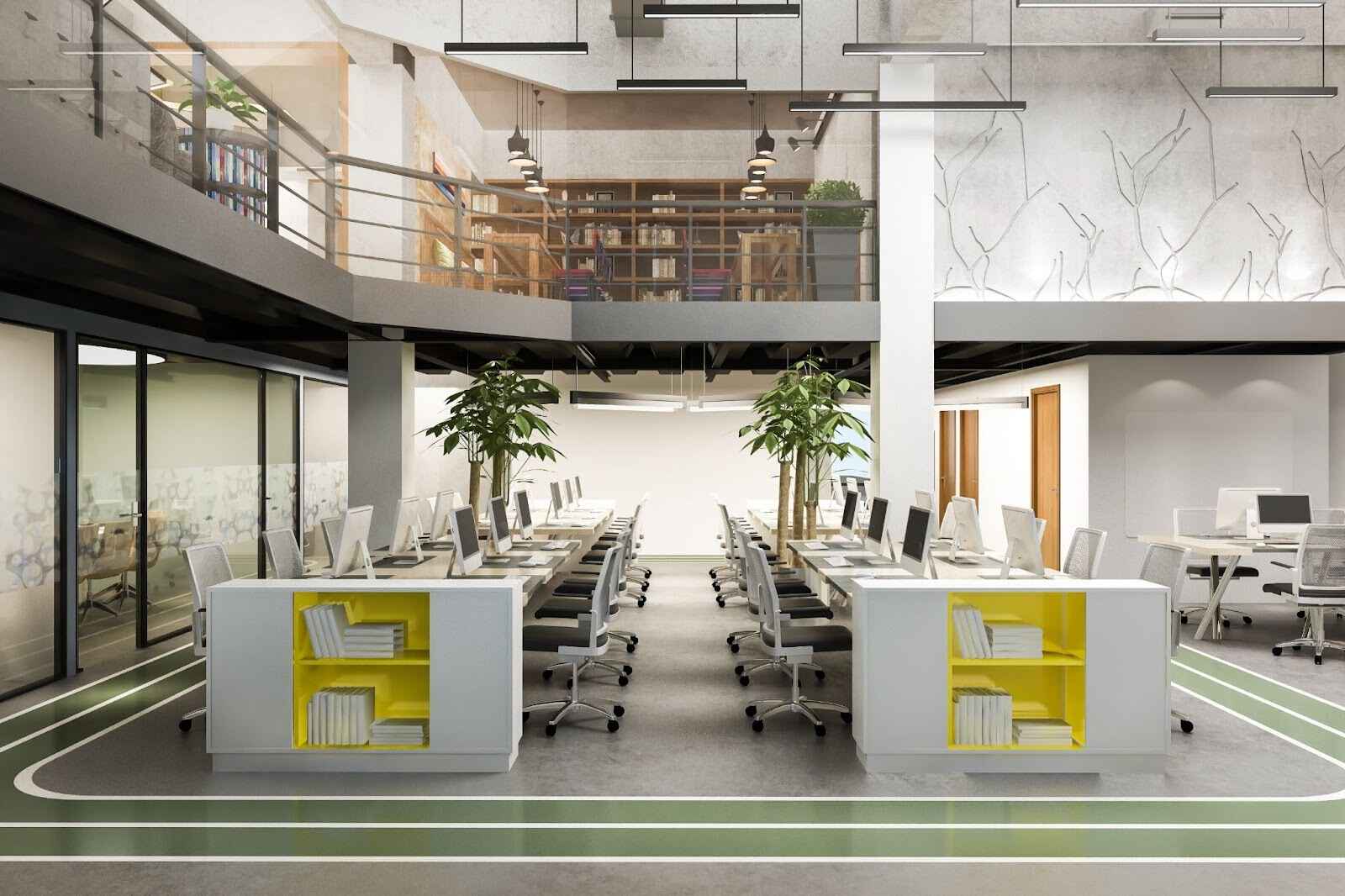
Designing an office that looks impressive but also supports productivity can be challenging. Many business owners in Singapore find it hard to create a workspace that balances aesthetics, employee comfort, and functionality.
It’s easy to get overwhelmed by endless trends or spend on features that don’t meet your team’s real needs. Without the right ideas, your office may end up looking good but not working well.
This guide covers smart and practical commercial office interior design ideas to help you build a workspace that inspires, adapts, and reflects your company’s identity.
1. Flexible And Hybrid Work Environments
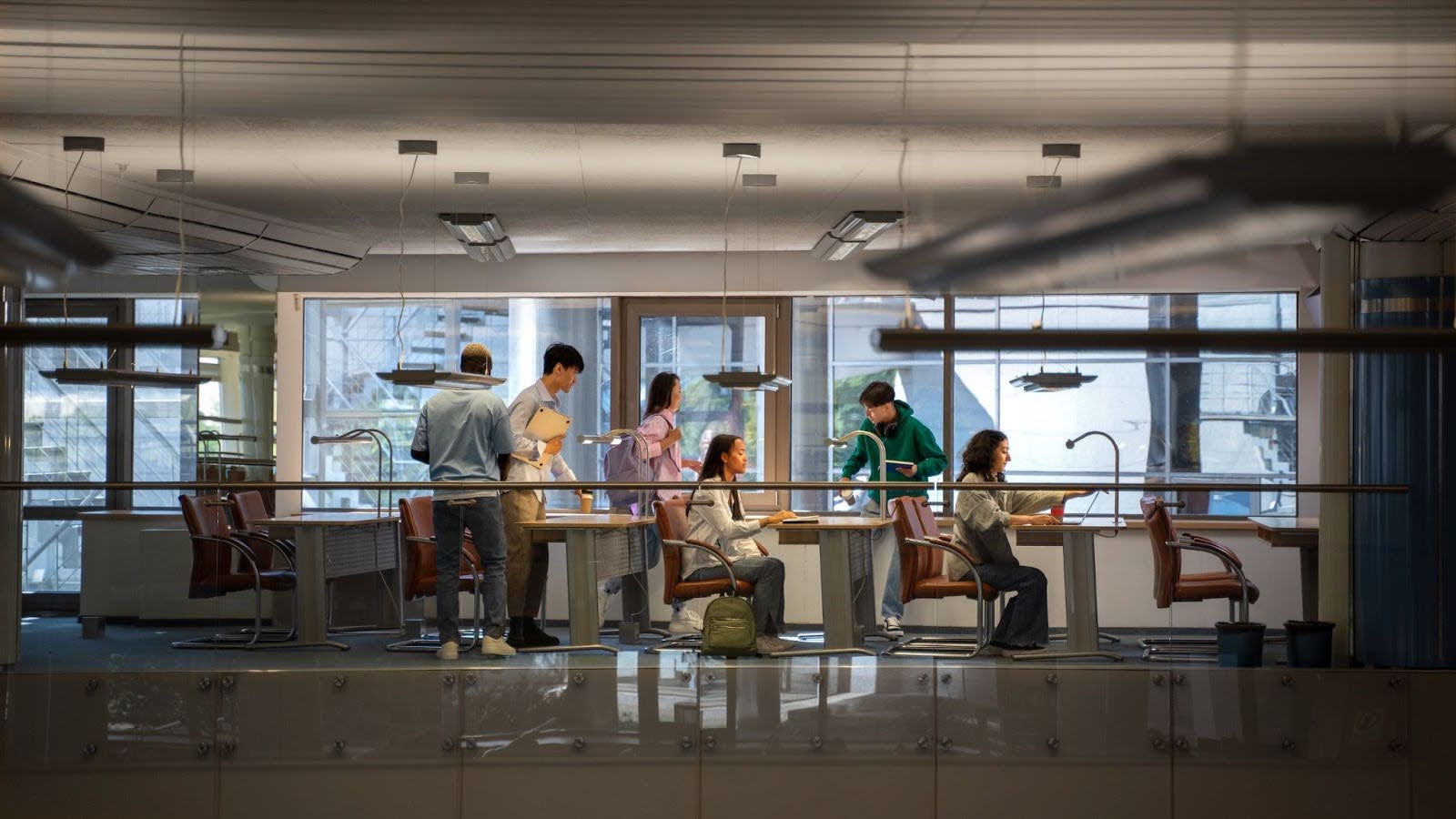
Flexible and hybrid work environments blend in-office and remote work setups while supporting different work styles.
As hybrid work becomes the norm in Singapore, businesses need office layouts that easily adapt to changing team sizes and activities. These designs allow employees to collaborate in person, join virtual meetings, or focus on solo tasks—all in one place.
Modern office interiors are moving away from rigid layouts and embracing choice. With a mix of workstations, lounge areas, and virtual-ready rooms, companies can cater to a wide range of employee needs.
Below are two of the most effective design strategies.
Hot-Desking, Agile Layouts, And Sit-Stand Desks
Hot-desking and agile layouts create a more dynamic office flow.
Instead of assigning fixed desks, hot-desking allows employees to pick where they want to work each day. This boosts interaction and gives teams more flexibility.
Key features to consider:
- Sit-stand desks for better posture and movement
- Mobile desks and chairs that can be rearranged easily
- Touchdown areas for short tasks or check-ins
These setups reduce unused space and support a flexible work culture. They also help accommodate both in-office and part-time remote staff without overcrowding the space.
Collaborative Zones And Private Work Pods
Employees need both open and quiet areas to work effectively.
Collaborative zones encourage teamwork and creativity. These spaces may include large shared tables, casual lounges, or whiteboard walls for brainstorming.
Meanwhile, private work pods provide solitude. They are especially helpful for:
- Video calls or virtual meetings
- Quiet focus work
- Small team discussions
Pods can be soundproofed, enclosed, or semi-private, depending on space and budget. By offering both collaborative and private settings, businesses create a more inclusive and productive office experience.
2. Biophilic Office Design Features
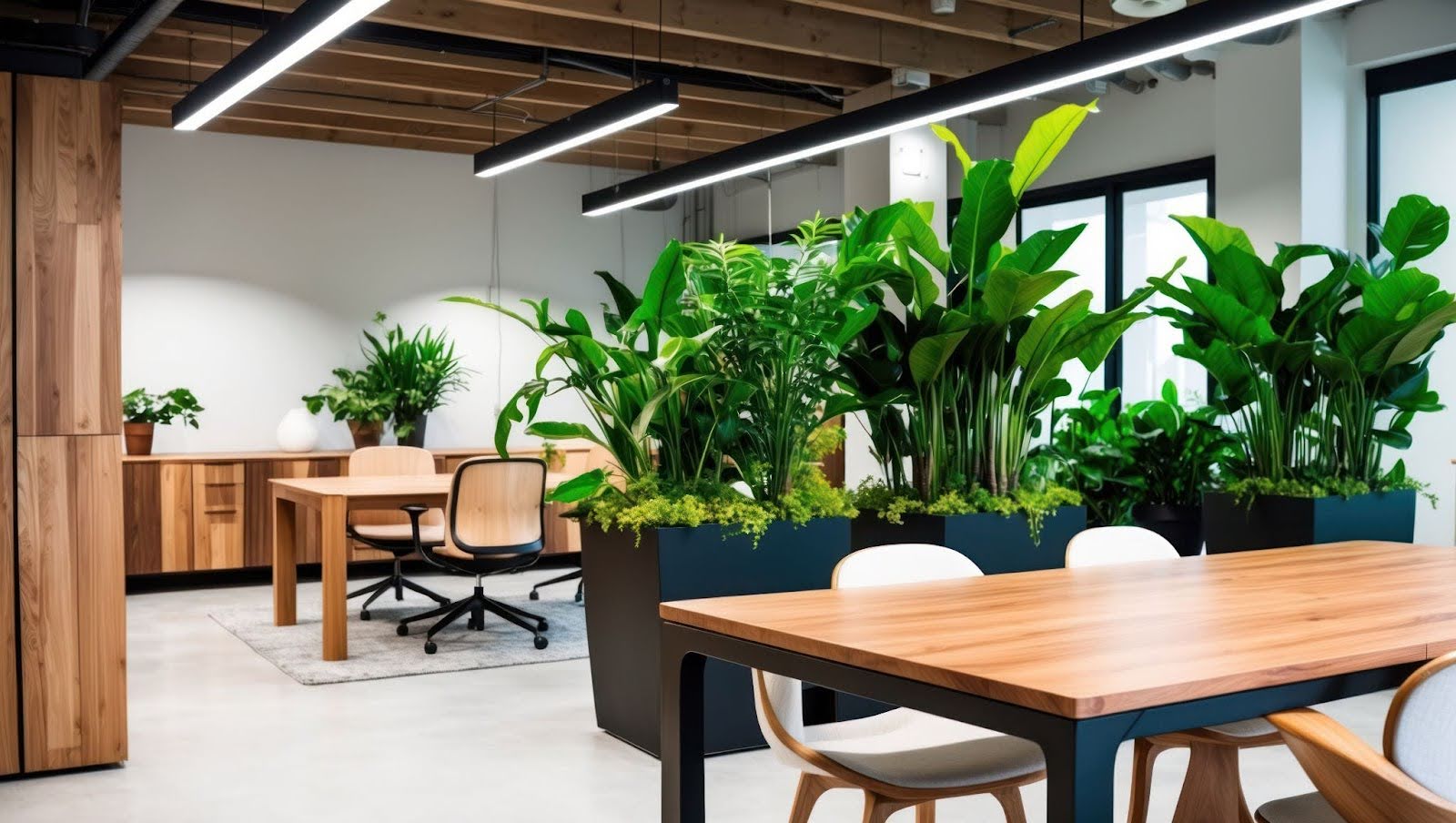
Biophilic office design connects people with nature to improve well-being, creativity, and focus.
Modern workspaces in Singapore are moving beyond basic decor by using natural elements to make indoor spaces feel more alive. This approach not only supports mental health but also enhances the visual appeal of the office.
By bringing nature indoors, companies can create a calming and energizing environment that boosts employee satisfaction and productivity.
Here are two popular biophilic features to include in your office.
Indoor Plants, Living Walls, And Green Roofs
Plants do more than decorate—they improve air quality and reduce stress.
Simple ways to incorporate greenery include:
- Potted plants in common areas and desks
- Living walls that act as vertical gardens
- Green roofs that lower indoor temperatures and conserve energy
These natural features can soften sterile workspaces and provide visual variety. They also help define spaces without using walls, keeping the office open and breathable.
In smaller offices, compact planters or hanging greenery can make a big difference without taking up much room.
Natural Materials, Light, And Earthy Tones
Natural elements create a grounded, soothing atmosphere.
Key ideas include:
- Wood and stone textures in walls, flooring, and furniture
- Large windows or skylights to maximize natural light
- Warm, earthy tones like beige, olive, or terracotta for calm energy
Mirrors and light-colored walls can enhance brightness in offices with fewer windows. Layering materials and tones adds visual warmth and a sense of comfort.
This mix of light, texture, and tone mimics outdoor experiences, helping employees feel more refreshed and connected.
3. Integrated Smart Office Technology

Integrated smart office technology improves efficiency, supports hybrid work, and creates safer, more adaptive workspaces.
As Singaporean companies adopt flexible work models, tech-enabled offices are becoming essential. From controlling lighting to booking meeting rooms, smart features make office life smoother and more intuitive.
Below are two key ways to enhance your office with smart solutions.
Occupancy Sensors, IoT Devices, And Smart Lighting
Smart systems help manage space, energy use, and employee comfort.
These technologies include:
- Occupancy sensors to monitor room usage and traffic flow
- IoT devices that automate lighting, air quality, and temperature
- Smart LED lighting that adjusts based on natural light or room activity
These tools reduce energy waste and give real-time insights into how spaces are used. They also allow facility managers to plan layouts based on actual usage patterns.
This data-driven approach improves space planning and creates a healthier indoor environment.
Contactless Entry And Voice-Activated Controls
Touch-free technology improves hygiene and convenience.
Especially in post-pandemic settings, reducing surface contact is a top priority. Consider:
- Automated doors, taps, and lighting switches
- Voice assistants like Alexa for managing tasks and meeting room controls
- Mobile apps for space booking, temperature settings, and AV control
These features make it easier for employees to move through the office, especially when multitasking or working hands-free.
They also integrate well with hybrid systems, giving remote and on-site employees equal access to tools and information.
4. Modular And Multi-Functional Layouts
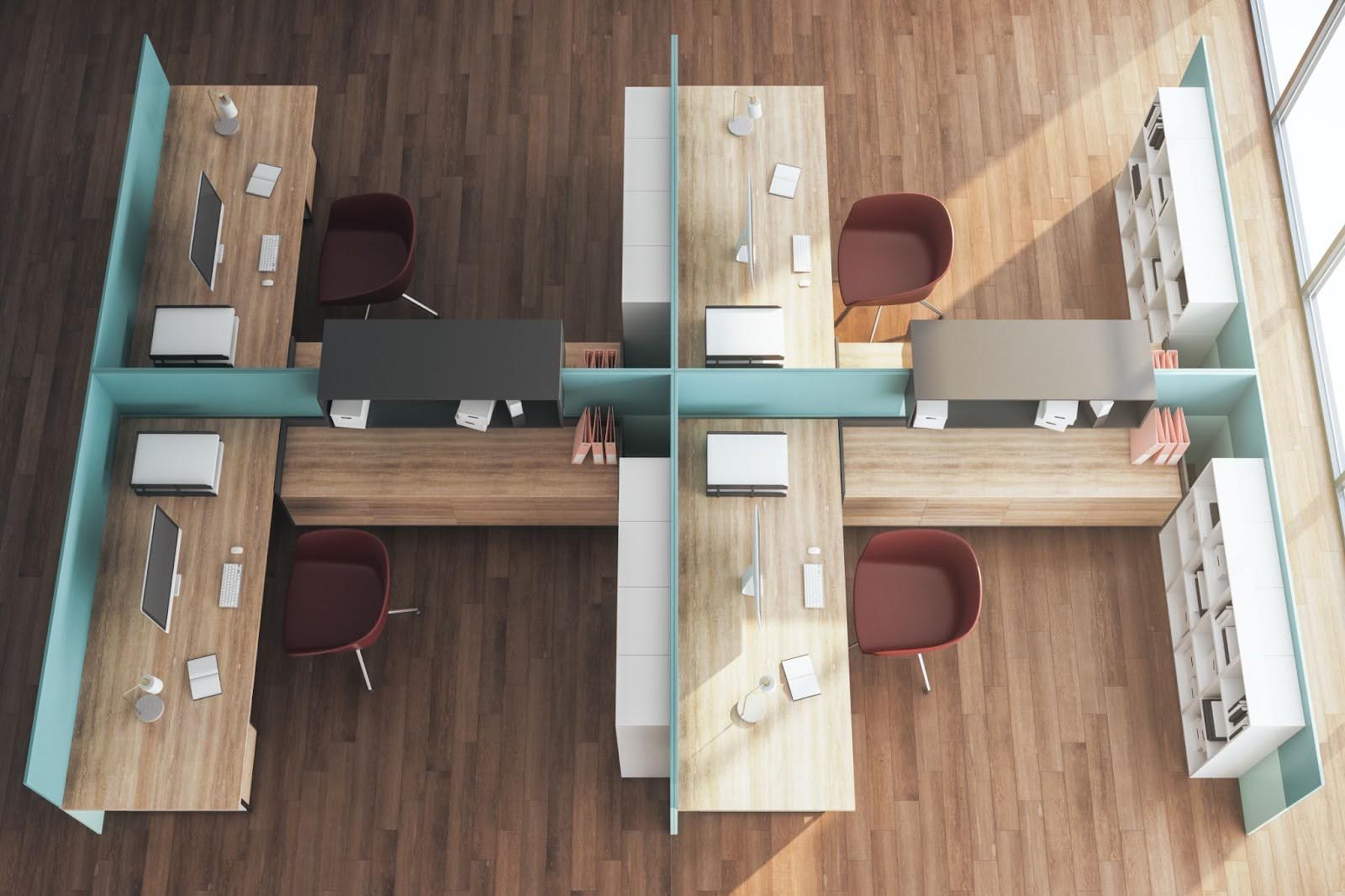
Modular and multi-functional layouts allow businesses to adapt their office space quickly for different activities and team needs.
Instead of static desk rows or closed rooms, these layouts support spontaneous collaboration, focused work, and everything in between. In Singapore’s fast-moving business scene, this flexibility is crucial for both startups and established firms.
Here are two smart ways to make your layout more versatile.
Moveable Furniture And Reconfigurable Spaces
Furniture that moves lets teams shape their environment.
Popular options include:
- Tables and chairs with wheels for quick rearrangement
- Foldable or stackable furniture to free up floor space
- Rolling whiteboards or mobile AV setups for on-the-spot meetings
These elements support daily changes in workflow and group size. When furniture can shift easily, one space can serve multiple purposes without costly renovations.
This approach also helps businesses respond faster to growth or downsizing.
Acoustic Partitions And Convertible Rooms
Balancing openness and privacy is easier with modular dividers.
Acoustic solutions include:
- Sliding or folding panels to divide large areas
- Sound-absorbing screens for open-plan offices
- Portable pods for phone calls or deep work
Convertible rooms can transform into meeting zones, training spaces, or event areas as needed. This makes every square meter work harder—especially useful in compact offices common across Singapore.
The result is a layout that evolves with your team’s needs, day by day.
5. Mental Wellness And Workplace Comfort
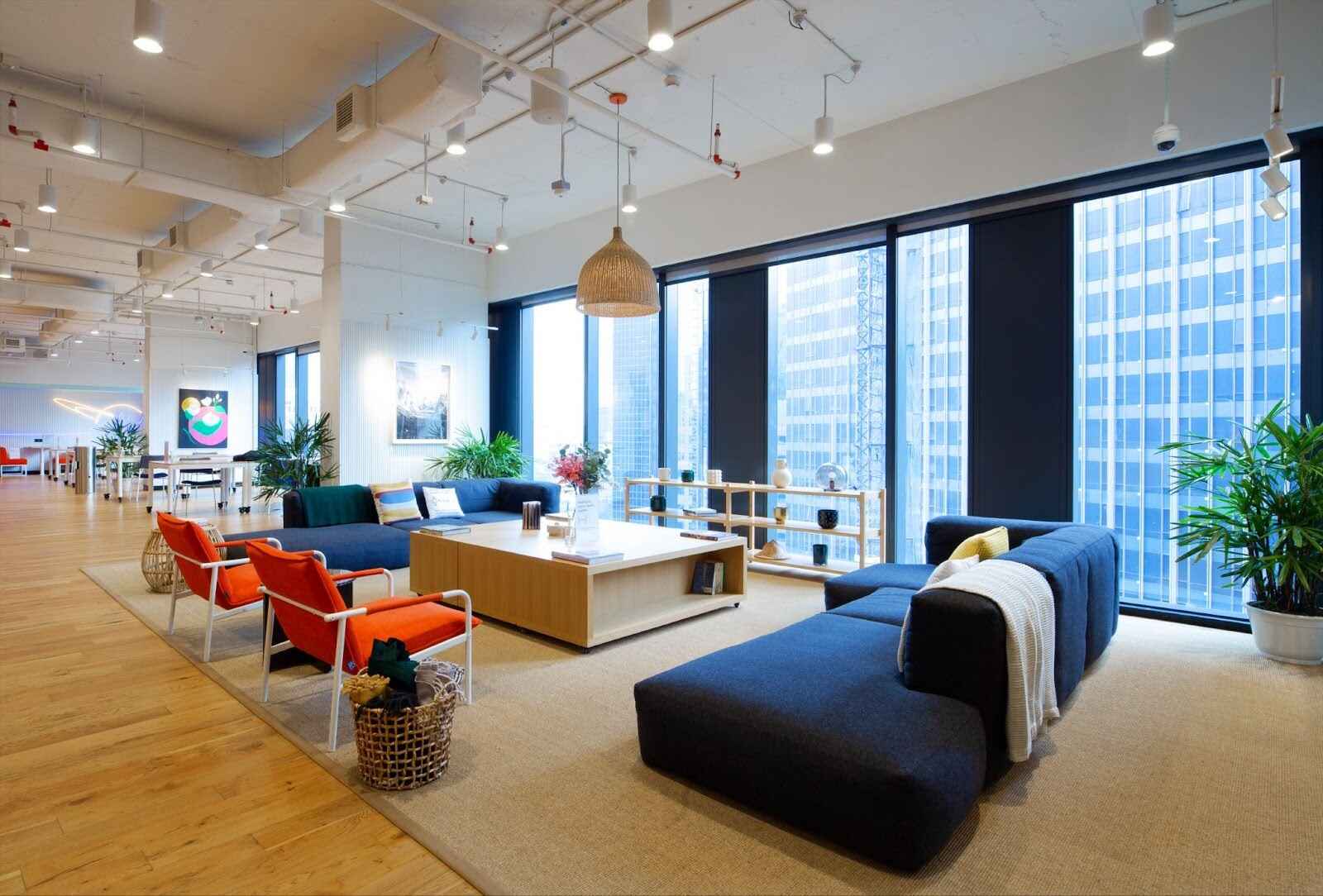
Mental wellness and comfort-focused design are essential for reducing stress and supporting employee happiness.
As work and personal life often overlap, especially in hybrid roles, offices in Singapore are evolving to include spaces that help people recharge. A supportive environment leads to better focus, stronger morale, and lower burnout.
Here are two key features to consider.
Lounges, Wellness Zones, And Quiet Rooms
Employees need peaceful spaces to reset during the day.
Common wellness features include:
- Relaxation lounges with soft seating and low lighting
- Quiet rooms for short breaks, meditation, or prayer
- On-site wellness zones like nap pods, mini gyms, or walking paths
These spaces show employees that their well-being matters. They also help reduce tension during busy workweeks by offering a retreat within the office.
Designing such areas doesn’t require large space—it’s about smart layout and calming aesthetics.
Calming Lighting And Ergonomic Spaces
A comfortable workspace starts with the right lighting and furniture.
Consider:
- Natural light access through large windows or skylights
- Warm ambient lighting to reduce eye strain
- Ergonomic chairs and desks that support healthy posture
Even subtle upgrades—like footrests, monitor risers, or adjustable lamps—can make a big difference. Employees who feel physically comfortable are more likely to stay focused and engaged.
This attention to comfort can also improve retention by making your office a place people enjoy working in.
6. Branded And Locally Inspired Interiors
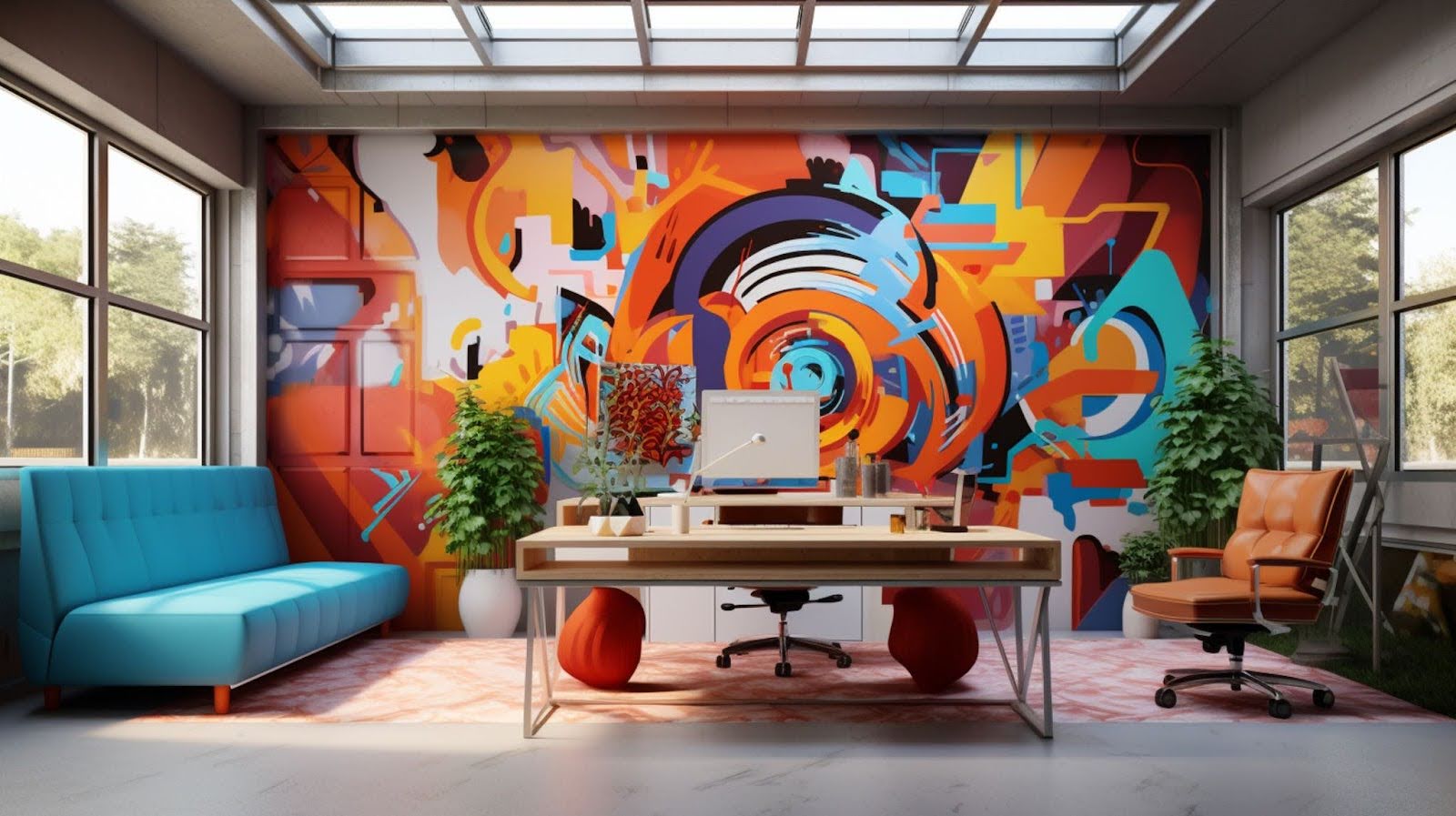
Branded and locally inspired interiors help companies express their identity while celebrating Singapore’s unique culture.
Your office space isn’t just where work happens—it’s a reflection of your business values and personality. A thoughtfully designed environment can make your brand memorable to both clients and employees.
Here are two meaningful ways to bring that vision to life.
Custom Murals, Company Colors, And Singapore Art
Your office can tell your brand story through visual design.
Simple and effective ideas include:
- Wall murals showcasing your company’s mission or achievements
- Brand color schemes used throughout furniture, decor, or accent walls
- Art pieces by local artists to add personality and community flair
These elements reinforce your identity and make your space feel intentional. They also help visitors and new hires connect more deeply with your brand’s values.
Reclaimed Local Materials And Neighborhood Touches
Design rooted in the local culture adds warmth and meaning.
Some ideas to incorporate:
- Reclaimed wood or stone from local sources
- Design details inspired by shophouses or Peranakan patterns
- Cafés or pantry menus featuring Singaporean cuisine
These touches create a strong sense of place. Employees feel more connected to their surroundings, while visitors get a subtle taste of your local pride.
Bringing the outside community inside your workspace can strengthen both team culture and public image.
7. Ergonomic Office Furniture Solutions
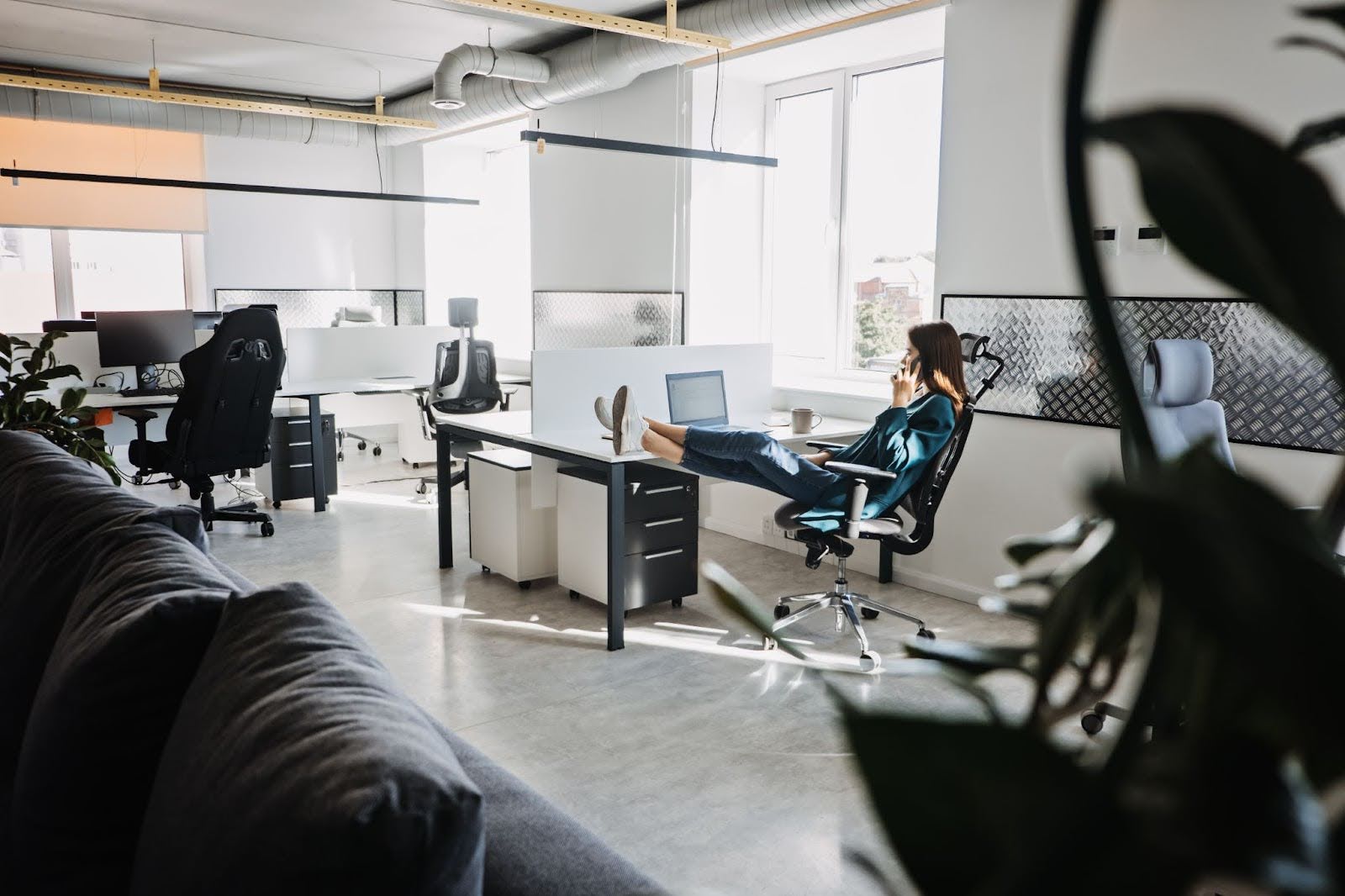
Ergonomic office furniture supports posture, comfort, and health, helping employees stay productive throughout the workday.
Whether your team is in the office full-time or part of a hybrid setup, seating and desks play a big role in how people feel and perform. Investing in the right furniture shows you care about both well-being and efficiency.
Here are two key ways to improve office ergonomics.
Adjustable Chairs And Sit-Stand Desks
These furniture pieces support different body types and working styles.
Smart ergonomic upgrades include:
- Chairs with adjustable height, lumbar support, and armrests
- Sit-stand desks that allow users to alternate between sitting and standing
- Footrests and wrist supports for added comfort
These features help reduce back, neck, and wrist strain—common issues in office settings. They also allow employees to customize their setup to fit their personal needs.
When employees feel physically supported, they can work longer and with better focus.
Universal Design For Diverse Employee Needs
Inclusivity matters in office design too.
Look for:
- Furniture that accommodates different heights and mobility levels
- Desks with enough clearance for wheelchairs
- Chairs that support a wider range of body sizes
Universal design not only supports diverse teams but also reduces the need for special accommodations. It ensures everyone can use the space comfortably, without barriers.
This thoughtful approach improves morale and signals that your company is committed to accessibility and respect.
8. Color Psychology And Design Aesthetics
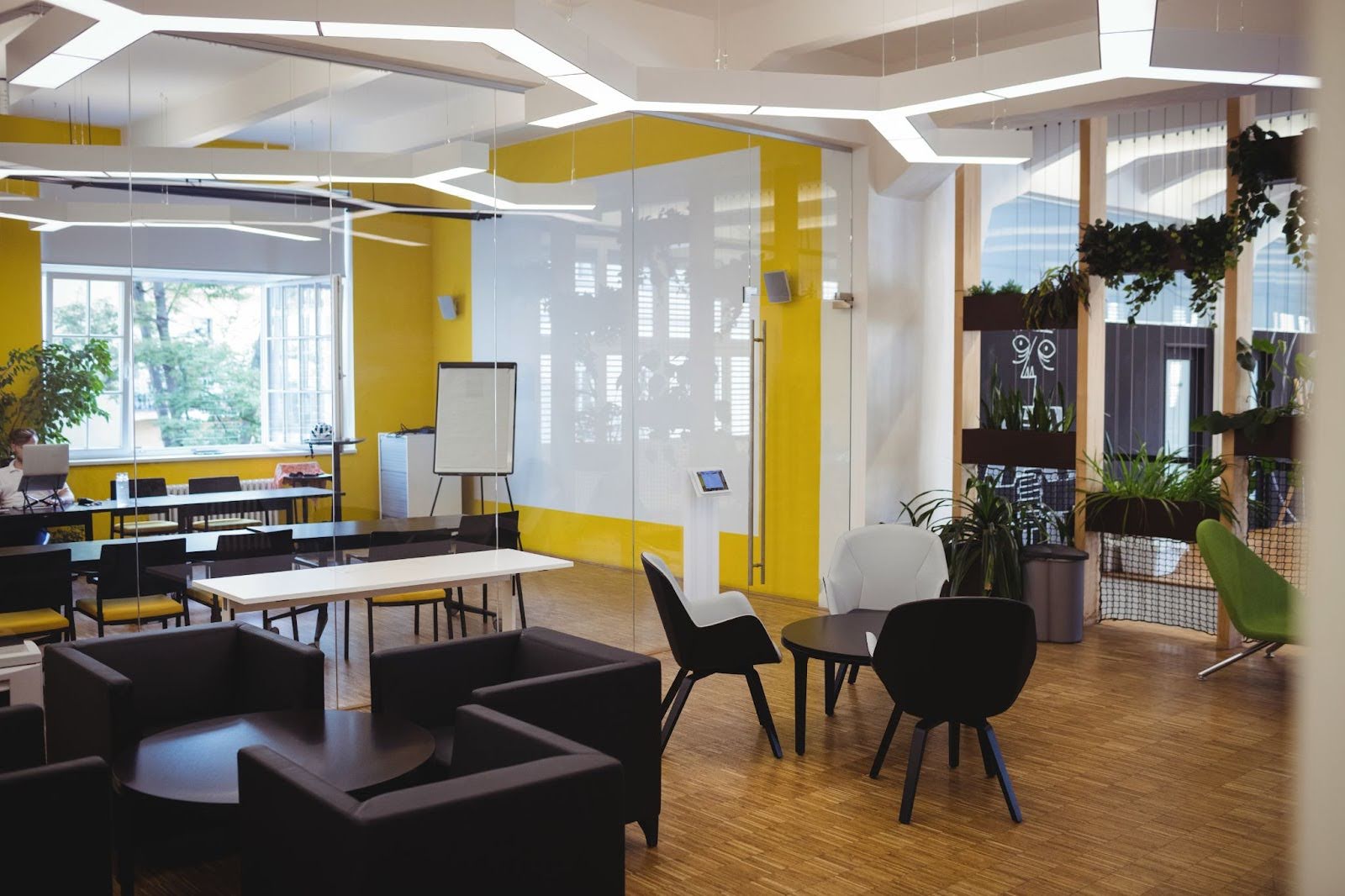
Color psychology and design aesthetics influence mood, focus, and how employees interact with the space.
Colors are more than just decoration—they shape how people feel in an environment. Choosing the right palette and finishes can create a workspace that feels energizing, calming, or creative, depending on your goals.
Here are two ways to apply color and design intentionally in your office.
Energizing Brights And Calming Neutrals
Different colors support different kinds of work.
Use these guidelines:
- Bright colors like yellow, orange, or red spark creativity and movement—ideal for brainstorming zones or social areas
- Cool tones like blue or green reduce stress and support focus—perfect for private workspaces
- Neutral bases like grey, beige, or off-white keep the environment balanced and professional
By mixing energizing and calming hues in the right places, you help employees stay both motivated and comfortable.
Strategic Use Of Color To Define Zones
Colors can also help organize the office visually.
Examples include:
- Accent walls that mark meeting spaces or collaboration hubs
- Color-coded furniture to guide people through different zones
- Artwork or signage that ties into your brand palette
This visual zoning makes the space more intuitive to navigate and adds personality without clutter. It’s especially useful in open layouts where traditional walls are limited.
Done right, color becomes both a functional and emotional part of your design strategy.
9. Inclusive And Accessible Workplace Features
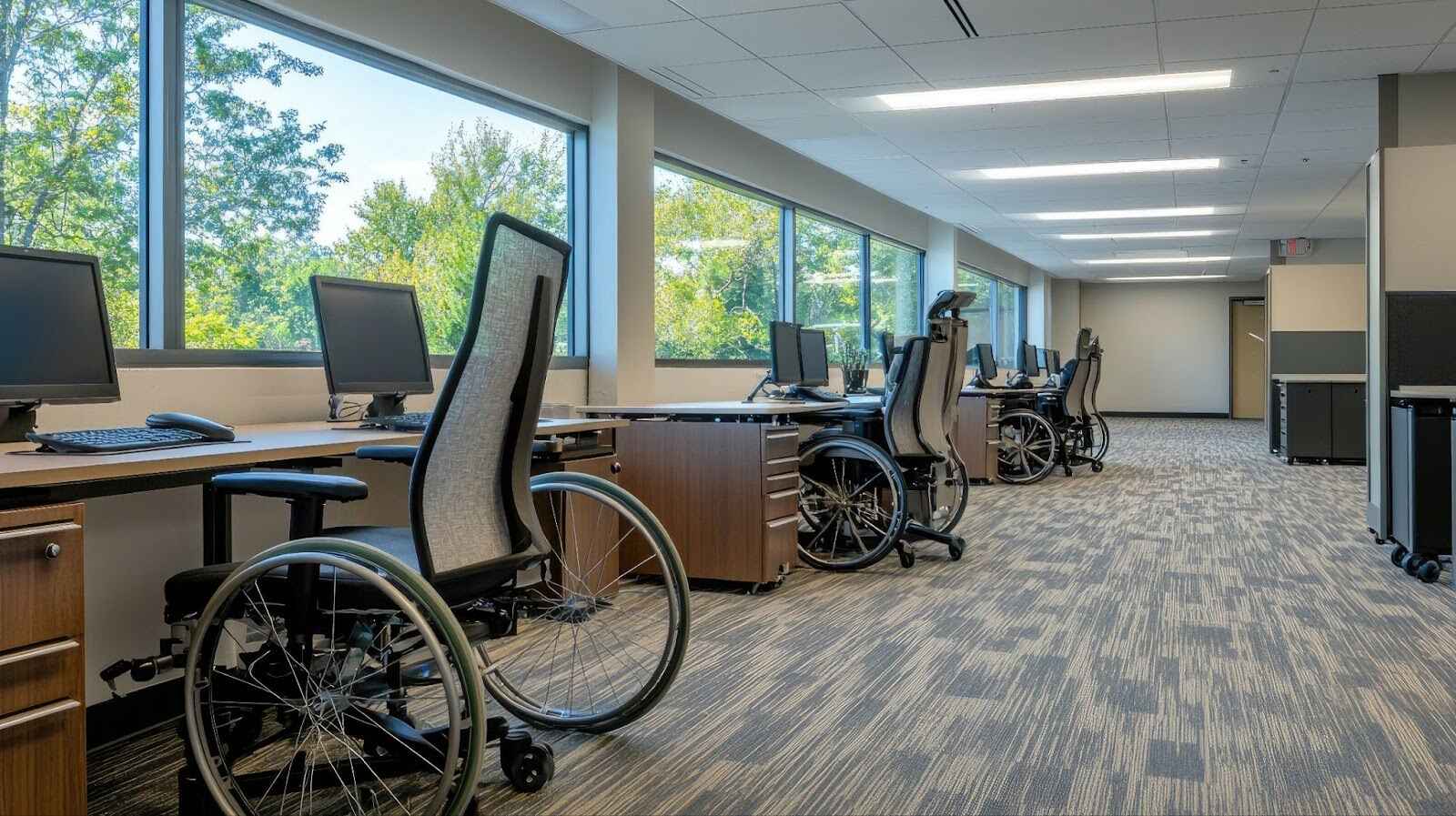
Inclusive and accessible workplace features ensure that all employees—regardless of background, ability, or identity—can work comfortably and confidently.
A thoughtful office design goes beyond aesthetics. It considers everyone’s physical and emotional needs, promoting equity and belonging across the team. In Singapore’s diverse workforce, inclusivity is more important than ever.
Here are two ways to make your workspace more welcoming and accessible.
Gender-Neutral Bathrooms And ADA Compliance
Designing with inclusivity in mind starts with the basics.
Common accessibility features include:
- Gender-neutral restrooms that respect all gender identities
- Wheelchair-accessible layouts with wide pathways and ramp access
- Height-adjustable counters and automatic doors for added convenience
These features not only meet legal standards but also create an environment where employees feel seen and respected.
They reflect your company’s values and support a modern, forward-thinking workplace culture.
Multilingual Signage And Diverse Work Settings
Small details can make a big impact on user experience.
Consider adding:
- Signage in multiple languages to support international or bilingual teams
- Varied workspace types like standing desks, lounge seating, and private booths for different working styles
- Visual guides to help new visitors navigate the space easily
Offering different work settings accommodates introverts, extroverts, and everyone in between. It allows people to choose where they feel most comfortable, fostering inclusion and productivity.
Inclusivity is more than a trend—it’s a standard for modern office design.
10. Residential-Inspired Office Comforts
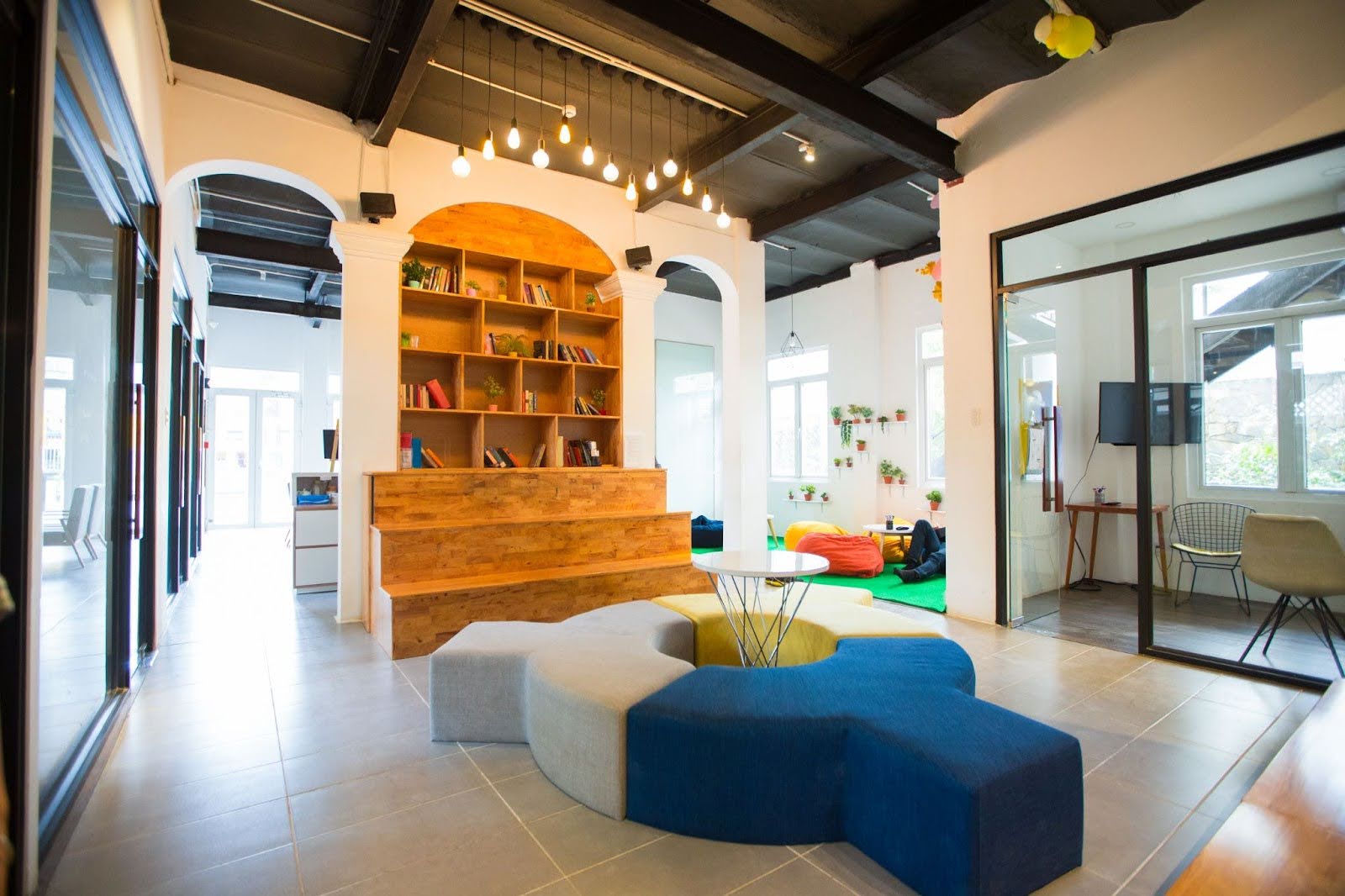
Residential-inspired office comforts make the workplace feel more relaxed, inviting, and human.
As hybrid work blurs the line between home and office, employees now expect more than just desks and chairs. Offices in Singapore are evolving to feel like a second home—with cozy features that improve mood and support informal collaboration.
Here are two ways to add comfort and warmth to your workspace.
Couches, Throw Pillows, And Warm Lighting
Soft furnishings and gentle lighting instantly make a space feel more livable.
Effective elements include:
- Comfortable couches or armchairs in break rooms or lounge areas
- Throw pillows and soft textiles to add texture and personality
- Warm ambient lighting that mimics natural light and reduces eye strain
These touches encourage employees to relax, socialize, or even brainstorm in a more casual setting. They also help visitors feel welcomed the moment they step in.
Comfort doesn’t just improve morale—it can enhance productivity, too.
Coffee Corners And Social Spaces
Work is better when there’s room to connect.
Consider adding:
- Pantries or mini cafés with quality coffee, snacks, and bar seating
- Social hubs like open dining tables or casual chat zones
- Recreational features such as board games or reading nooks
These areas promote spontaneous conversations and team bonding. When employees have places to take breaks together, it helps build community and strengthens company culture.
A little hospitality goes a long way in making the office somewhere people want to be.
11. Outdoor And Semi-Outdoor Workspaces
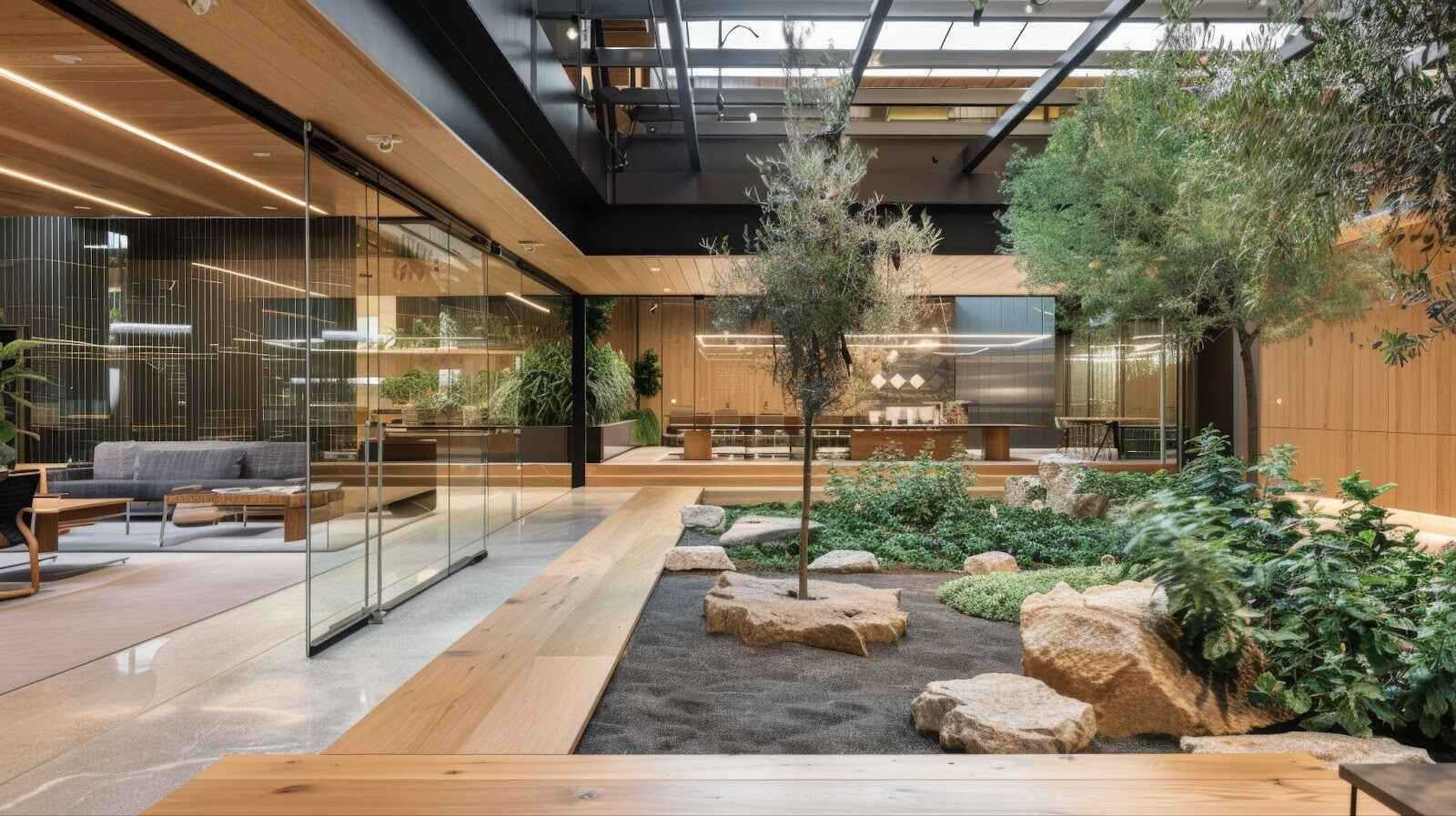
Outdoor and semi-outdoor workspaces give employees fresh air, natural light, and a mental reset—without leaving the office.
In a city like Singapore, where green spaces and rooftop views are increasingly valued, adding outdoor work zones can enhance your office’s appeal and promote well-being. These areas blend productivity with relaxation and offer a refreshing break from indoor settings.
Here are two ways to make the most of your outdoor space.
Rooftop Lounges With Wi-Fi and Shade
Rooftop areas are ideal for informal meetings or solo work.
To make them usable year-round, consider:
- Weather-resistant seating that’s stylish and functional
- Reliable Wi-Fi access for uninterrupted productivity
- Shade structures like pergolas or large umbrellas for sun protection
These setups allow employees to enjoy Singapore’s skyline while staying connected. They also serve as a unique perk that improves job satisfaction and company culture.
Zen Gardens, Natural Light, And Open-Air Seating
Semi-outdoor spaces can create a calming, retreat-like environment.
Try incorporating:
- Zen-inspired features like stone paths, potted greenery, or small water fountains
- Outdoor furniture with cushions and low tables for flexible seating
- Retractable glass walls or sliding doors to blend indoor and outdoor zones
These tranquil spaces support mindfulness, reduce stress, and offer an escape without needing to leave the building.
When designed thoughtfully, outdoor areas become an extension of the office—supporting work, wellness, and creativity all at once.
Conclusion About Commercial Office Design Ideas In Singapore
Designing a modern commercial office isn’t just about style. It’s about creating a space that supports productivity, well-being, and your brand identity. From flexible layouts and smart tech to biophilic features and inclusive design, every detail impacts how people feel and perform at work. A well-designed office can inspire your team, impress clients, and grow with your business.
At Yangs Design Associates, we go beyond office interiors. Our commercial portfolio spans retail outlets, medical and dental clinics, and food and beverage spaces across Singapore. With our in-house carpentry, mechanical and electrical, and drafting teams, and over 300 skilled workers locally, we deliver precision, speed, and quality from concept to completion.
Let’s bring your vision to life. Reach out today and start planning with us.
Frequently Asked Questions About Commercial Office Design Ideas In Singapore
What Are Commercial Office Interior Design Ideas?
They are concepts used to design workspaces that improve productivity, reflect brand identity, and support employee well-being.
Why Is Office Interior Design Important For My Business?
Good design boosts morale, attracts talent, impresses clients, and supports different work styles.
How Do I Choose The Right Office Design For My Company?
Start by identifying your team’s needs, work habits, and brand personality, then plan a layout that supports them.
What Design Trends Are Popular In Modern Offices?
Popular trends include hybrid workspaces, biophilic elements, smart technology, and flexible furniture.
How Can I Make My Office More Comfortable For Employees?
Use ergonomic furniture, natural light, quiet zones, and cozy lounge areas to support comfort and mental wellness.
Do I Need A Professional Interior Designer For My Office?
Yes, a professional interior designer ensures your space is both functional and stylish, while saving you time and costly design mistakes.
Do You Only Specialize In Office Interiors?
No. In addition to office spaces, we also design commercial interiors for retail outlets, medical and dental clinics, and food and beverage establishments across Singapore.
What Kind Of Support Do You Offer During The Project?
We provide full in-house support from start to finish. Our carpentry, mechanical and electrical, and drafting teams work closely to ensure quality and efficiency. With over 300 workers based in Singapore, we handle everything from design to execution seamlessly.

